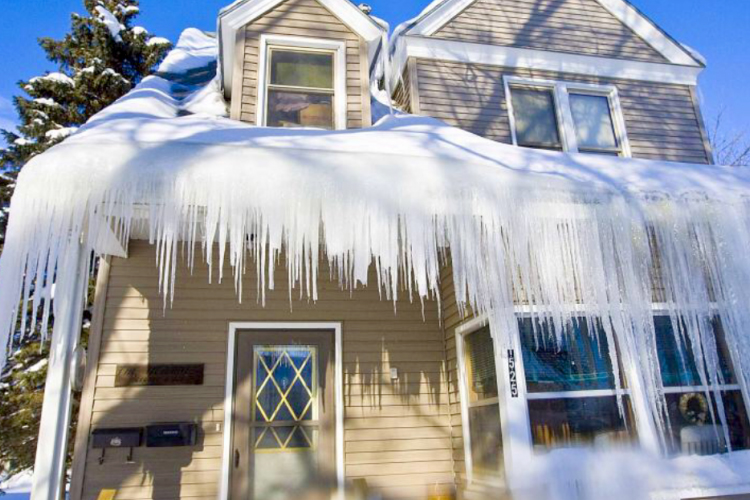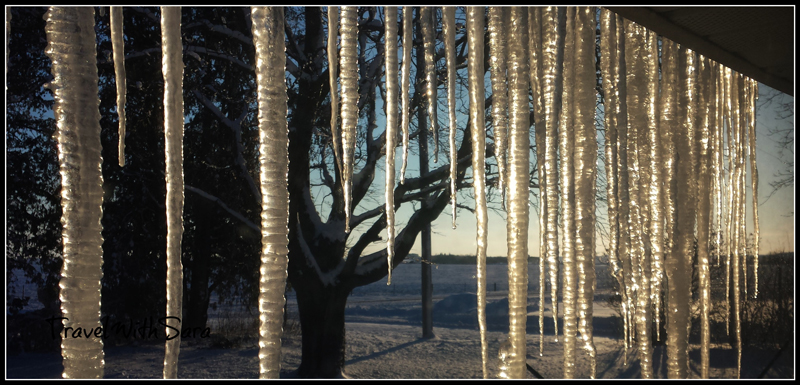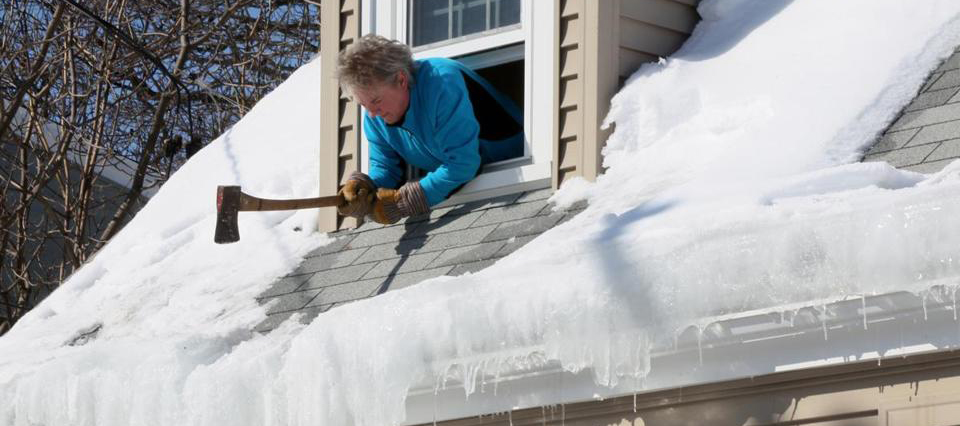Icicles–Great for Holiday Cards, Not So Great for Your House

When people think of a winter wonderland, icicles likely make their way into the picture. It’s not uncommon to find them hanging from houses in your neighborhood, shimmering among the bright, fresh snow in winter. You might even have them on your own house.
But sometimes even the prettiest things have a nasty story behind them.
If your icicles are just a few inches long, don’t get too much anxiety over it. Sometimes a few small winter diamonds are unavoidable, and that’s okay. But when those honkers turn into 2+ feet long ice knives, that could be a sign of some poor insulation and a foreshadow for some damage in the future.
So if you find big ones on your home, here is what that could mean, and what you should do to be proactive about the issue.
How do they form?
The process for icicle formation is actually quite simple: heat is rising throughout your home and through the roof, leading to snowmelt. As the water accumulates to the edge of your roof and to your gutter where it will re-freeze into icicles.
Why are they a problem?
The problem breaks down into two parts: you’re losing your precious heat, and your roof and gutters can be damaged.
As heat rises throughout your home you don’t want to lose too much of it through the roof–there is an energy bill to consider, here! This is usually a sign that your roof and attic have poor insulation, resulting in a loss of heat. This doesn’t always apply to the whole top part of your house. They may form only in certain areas of the house and can be a guide for where to start your finding your solution.
As for your roof and gutters, you might find more obvious destruction from the buildup of icicles. When they become too heavy or too large, it could lead to more snow accumulation. Over time, your roof or gutters may not be able to hold up all the weight and fall apart as a result–and that’s just damage from snow.
As the snow melts, a lot of the water will also pool on your roof. Many homeowners experience the water seeping into their home, leading to further damage on their walls and the wood within them.
So what should you do about it?
The key is to be proactive, not reactive.
Some people might feel inclined to grab their ladder and start knocking those babies off your house. But this could be a) hazardous to the person and b) hazardous to their house.
So insulate your attic. Sounds a little silly, something so simple. But it’s simple physics.
The heat mainly comes from your ceiling, so the attic needs to be air. sealed. Even the smallest of air leaks can accumulate and lead to a lot more heat into the attic than you anticipate, so make insulation one of the top priorities. Find the important leakage points and seal those babies up.
Might sound like a bit of a pain to do, but in the end, you’ll find yourself preventing a lot of problems, and you might find a few extra perks along the way. In addition to your icicle-free house, you’ll find that the insulation will save you headaches in the long term while lowering your energy bill since your heat won’t be escaping your home. Go explore your options to beef up your insulation and reap up the benefits. You’ll be saving yourself a lot of trouble later.











